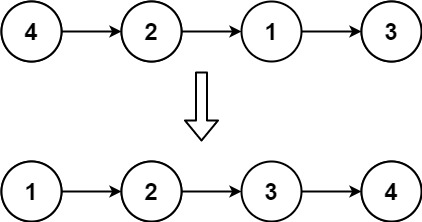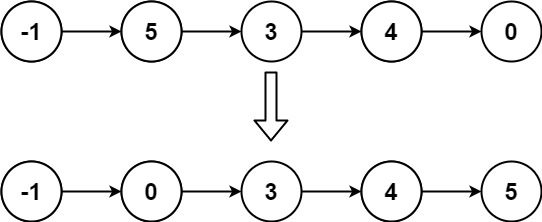【LeetCode】147. Insertion Sort List 解题记录
问题描述
Given the head of a singly linked list, sort the list using insertion sort, and return the sorted list’s head.
The steps of the insertion sort algorithm:
- Insertion sort iterates, consuming one input element each repetition and growing a sorted output list.
- At each iteration, insertion sort removes one element from the input data, finds the location it belongs within the sorted list and inserts it there.
- It repeats until no input elements remain.
The following is a graphical example of the insertion sort algorithm. The partially sorted list (black) initially contains only the first element in the list. One element (red) is removed from the input data and inserted in-place into the sorted list with each iteration.
测试样例

1 | Input: head = [4,2,1,3] |

1 | Input: head = [-1,5,3,4,0] |
说明
1 | nums1.length == m |
解题
思路
插入排序链表版,添加头节点前驱可以简化代码。
补充:
- 时间复杂度
O(n^2)
代码
1 | /** |
本博客所有文章除特别声明外,均采用 CC BY-NC-SA 4.0 许可协议。转载请注明来自 哆啦 C 梦!
评论



